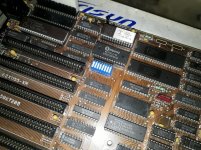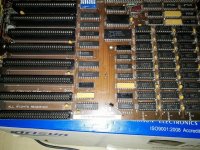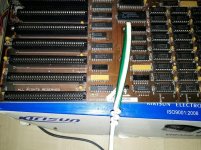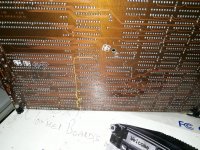Are those IBM cards, or clones ? I have heard of some clone MDA/CGA cards causing a corrupted display (for all tests) when used with the Supersoft/Landmark diagnostics. I have such a card somewhere. But I have yet to hear of a clone card causing a lockup.
If there was bad video RAM, or a refresh issue (where video RAM is dynamic rather than static), then I would expect:
* If the video card does not contain parity generating/checking circuitry, data read back is different to that written, fail the video RAM test.
* If the video card does contain parity generating/checking circuitry, then per [
here], the video card would take pin A1 low, resulting in an NMI to the CPU, resulting in a jump to the Supersoft/Landmark's NMI handler. Fail the video RAM test.




